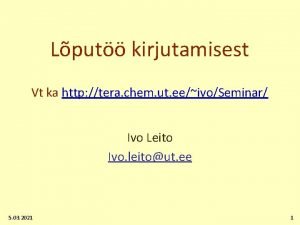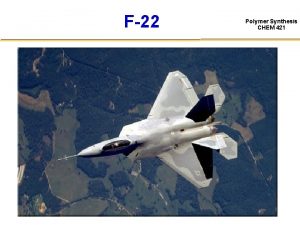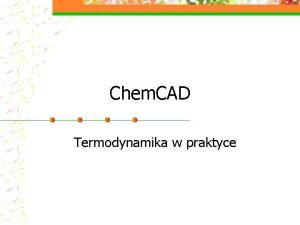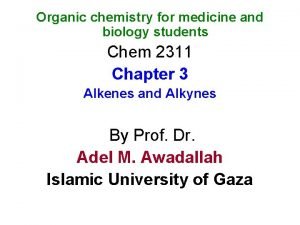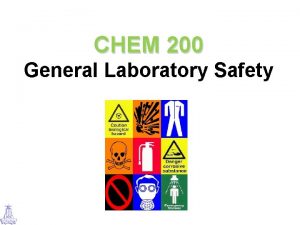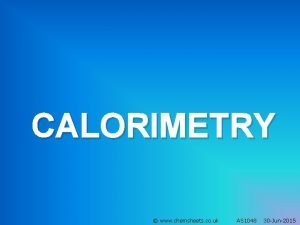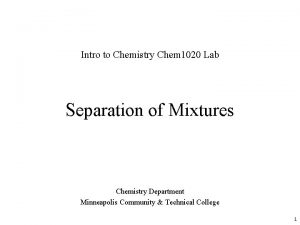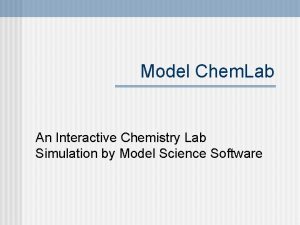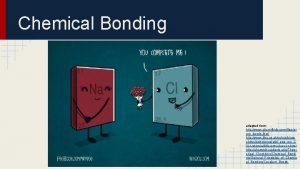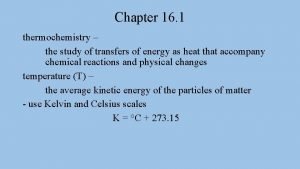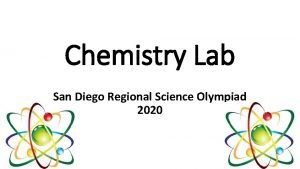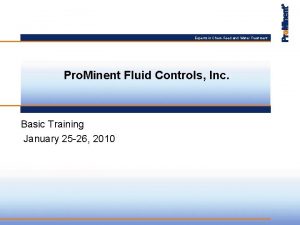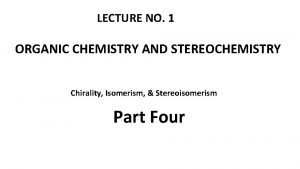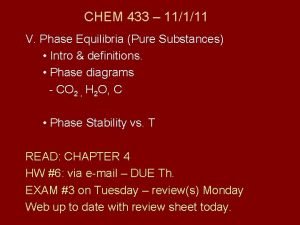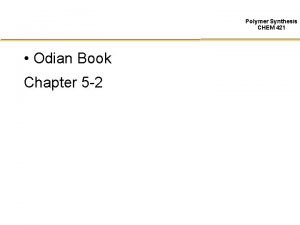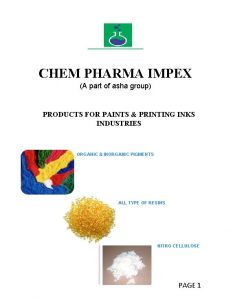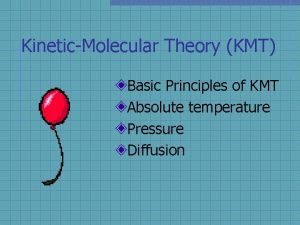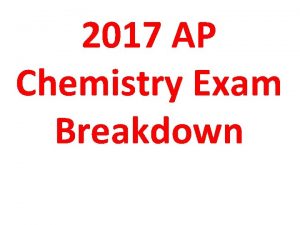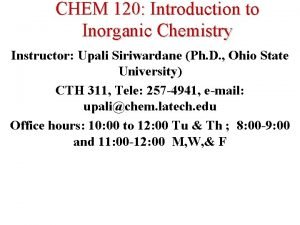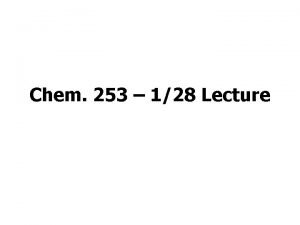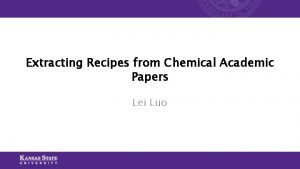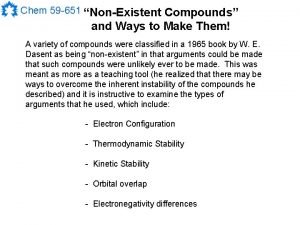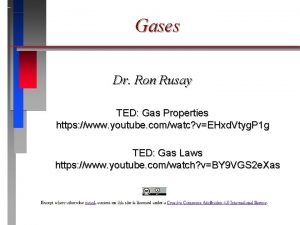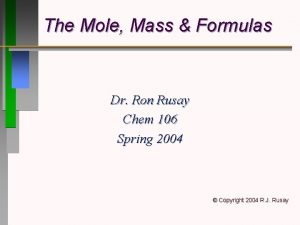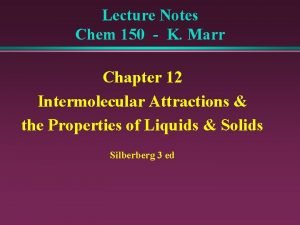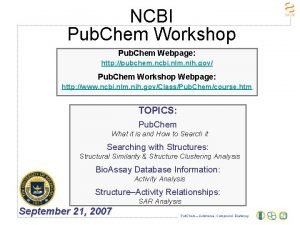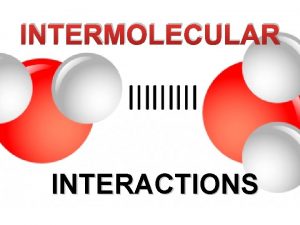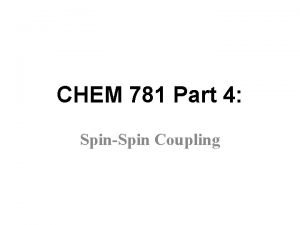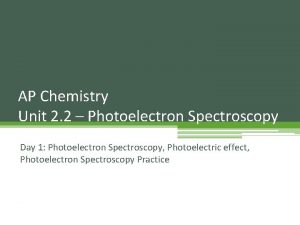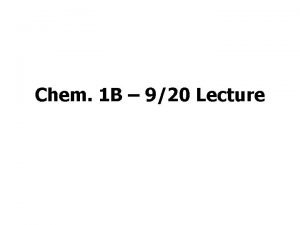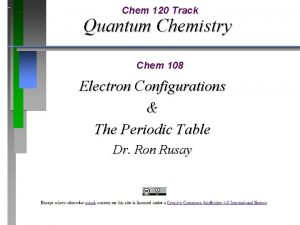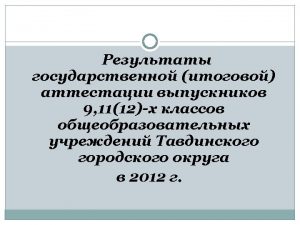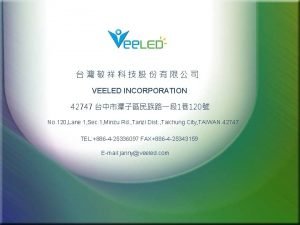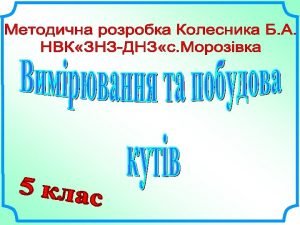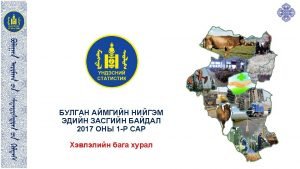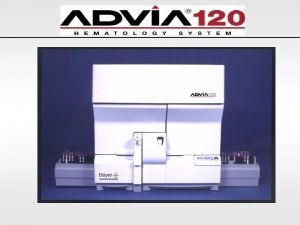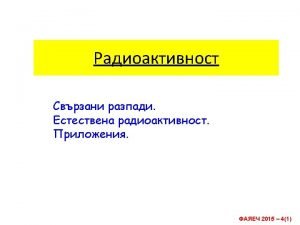Chem 120 Profile 2010 2014 2010 2012 2013


















































- Slides: 50

Chem 120 Profile: (2010 -2014) 2010 2012 2013 % % % 35. 7 41. 1 41. 7 2. Nutrition/ Dietetics 1. 8 8. 3 3. Biochemistry 3. 6 8. 9 13. 3 4. Physical Therapy / Sports or Personal Training 8. 9 1. 7 5. Pharmacy 7. 1 6. 7 28. 6 16. 1 26. 7 7. Chemistry 7. 1 5. 4 0. 0 8. Physical Science: Physics or Geology or Astronomy 5. 4 1. 8 0. 0 9. Environmental Science 1. 8 0. 0 5. 4 7. 1 1. 7 1. Biology or Related: MCB, Genteics, Pre-med, etc. 6. Engineering 10. Other

Scientific & Chemical Fundamentals Dr. Ron Rusay

Scientific & Chemical Fundamentals Chemistry & the Scientific Method ð Matter : Classification & Properties ð Mathematics / Arithmetic: ð Exponents, Significant Figures Measurement & Units: (SI & metric) ð Conversions and Relationships: Dimensional Analysis: Density, Percent ð VOCABULARY: Key Terms, Bold Style Learning ð

http: //chemconnections. org/general/chem 120/zumdahl. 9 e-int. html Background Reading Chemical Foundations 1. 1: Chemical Foundations 1. 2: The Scientific Method 1. 3: Units and Measurements 1. 4: Measurement Uncertainty 1. 5: Significant Figures and Rounding 1. 6: Systematically Solving Problems 1. 7: Unit Conversions 1. 8: Temperature 1. 9: Density 1. 10: Classification of Matter (Separations)

Science & The Scientific Method

The LAW of Gravity? New York Times, July 12, 2010 http: //www. nytimes. com/2010/07/13/science/13 gravity. html? _r=1&ref=space

The LAW or THEORY of Gravity? http: //arxiv. org/abs/1001. 0785

Law vs. Theory A New Explanation of Gravity The Case of Gravity Law(s)? vs. Theory Spinoza Prize € 2. 5 x 106

QUESTION The difference between a scientific law and a scientific theory can, at times, be confusing. For example, we will refer to the “Atomic theory” or perhaps the “Law of Gravity. ” Should the Law of Gravity be changed to the Theory of Gravity? A. Yes, no one can see gravity, it is better described as a theory. B. No, scientific laws are based on summaries of many observations and gravity observations are well known and predictable. C. Yes, gravity is better described as a theory because gravity explains why masses attract each other and theories are about explaining observations. D. No, keep it as a law, laws offer explanations and gravity explains why masses attract each other and laws are about explaining observations.

Answer The difference between a scientific law and a scientific theory can, at times, be confusing. For example, we will refer to the “Atomic theory” or perhaps the “Law of Gravity. ” Should the Law of Gravity be changed to the Theory of Gravity? A. Yes, no one can see gravity, it is better described as a theory. B. No, scientific laws are based on summaries of many observations and gravity observations are well known and predictable. C. Yes, gravity is better described as a theory because gravity explains why masses attract each other and theories are about explaining observations. D. No, keep it as a law, laws offer explanations and gravity explains why masses attract each other and laws are about explaining observations.

Some Possible Steps in the Scientific Method 1. Observations • (Measurement: See Tomorrow’s Lab) • qualitative quantitative • possible explanation(s) for the 2. Formulating hypotheses observation 3. Performing experiments • • gathering new information testing whether the hypotheses are valid 4. Developing a theory 5. Testing & Refining

Chemistry: The Study of Matter ð In all of its forms & all of its behaviors ð Sub-categories (not so distinct any longer) • • Organic: carbon Inorganic: non-carbon Organometallic: organic + inorganic Analytical: what? , how much? , how pure? Biological / Biochemistry: living organisms Physical: energy, changes, rates Nuclear: the nucleus Environmental: interdisciplinary, eg. Oceanography

Chemistry & Matter (Chemicals) ð How many different chemicals do you think have been reported in the scientific literature? A) 100, 000 B) 1, 000 C) 10, 000 D) 100, 000 E) 1, 000, 000

Chemistry & Matter (Chemicals) ð How many different chemicals do you think have been reported in the scientific literature? A) 100, 000 B) 1, 000 C) 10, 000 ? or D) 100, 000 ? E) 1, 000, 000 CAS Registry : ~12, 000 in 1907; ~ 75 million in 2014 ~ 500 new molecules are added / hr http: //en. wikipedia. org/wiki/List_of_CAS_numbers_by_chemical_compound

Chemistry & Matter: Properties & States • Physical vs. Chemical Properties • Solid (s), Liquid (l), Gas (g) • Homogeneous vs. Heterogeneous Mixtures • Organization of atoms/molecules: atoms/elements molecules/compounds • Extensive vs. Intensive Properties Varies with amount (extensive) or does not vary with amount (intensive) Heat of reaction is extensive, density is intensive

QUESTION Extensive properties of a pure substance depend on sample size whereas intensive properties are characteristic of that substance. Which of these properties are intensive? I) Color II) Mass III) Density A) I and II B) I and III C) II and III D) I, II and III

Answer Extensive properties of a pure substance depend on sample size whereas intensive properties are characteristic of that substance. Which of these properties are intensive? I) Color II) Mass III) Density A) I and II B) I and III C) II and III D) I, II and III

Observations of Physical & Chemical Properties Physical-Chemical Properties Movie

QUESTION Which of these are chemical properties of matter? I) Corrosiveness II) Density III) Flammability IV) Melting point A) I and II C) II and IV B) I and III D) III and IV

Answer Which of these are chemical properties of matter? I) Corrosiveness II) Density III) Flammability IV) Melting point A) I and II C) II and IV B) I and III D) III and IV

States of Matter Movie

Matter & Energy E = mc 2 http: //energy. gov/articles/livestream-our-latest-nobel-prize-winner Based on the standard model of cosmology, the total mass/energy of the universe is comprised of 4. 9% ordinary (Chem 120) matter, 26. 8% dark matter and 68. 3% dark energy. [1][2] Thus, dark matter is estimated to constitute 84. 5% of the total matter in the universe and 26. 8% of the total content of the universe. [3] Dark matter is matter that is undetectable by emitted or absorbed radiation, but whose presence can be inferred from gravitational effects. 1) Ade, P. A. R. ; Aghanim, N. ; Armitage-Caplan, C. ; et al. (Planck Collaboration) (22 March 2013). "Planck 2013 results. I. Overview of products and scientific results – Table 9. ". Astronomy and Astrophysics (submitted). ar. Xiv: 1303. 5062. Bibcode: 2013 ar. Xiv 1303. 5062 P. 2) Francis, Matthew (22 March 2013). "First Planck results: the Universe is still weird and interesting". Arstechnica. 3) "Planck captures portrait of the young Universe, revealing earliest light". University of Cambridge. 21 March 2013. Retrieved 21 March 2013.

Organization of Matter Classification of Matter Quarks (sub-atomic particles): * Protons: composed of two up and one down quarks (uud) * Neutrons: composed of two down and one up quarks (ddu) proton leptons muon, tau, neutrino [up, down, strange, charm, bottom, top]

Physics “Standard” Model Interactions proton The Higgs Boson has no spin, no electric charge, nor color charge, Google: Classical vs Quantum Theory.


QUESTION Which of these atomic and/or molecular views represent pure substances? A) I and III B) II and IV C) I, II and IV D) II, III, and IV

Answer Which of these atomic and/or molecular views represent pure substances? A) I and III B) II and IV C) I, II and IV D) II, III, and IV

Using Physical & Chemical Properties: Distinguishing a Compound & a Mixtures and Compounds Movie

The effects of a magnet on iron: filings in a mixture and atoms in a molecule.

Chemical Separations Types of Mixtures ð Mixtures have variable composition of two or more components. ð A homogeneous mixture is a solution (for example, vinegar: water + acetic acid, or steel & bronze: solid metals) ð A heterogeneous mixture is, to the naked eye, clearly not uniform (for example, a bottle of ranch dressing with two layers: water + oil, or two solids: iron and sulfur)

Separating Mixtures • Filtration: : Separates components of a mixture based upon differences in particle size. Examples: a precipitate from a solution, or particles from an air stream. • Crystallization: Separation based upon differences in solubility of components in a mixture. Ideally the impurities are much more soluble in the solvent than the material being purified. • Distillation: Separation based upon differences in volatility (boiling points) of components in a homogeneous mixture. Example: ethanol & H 2 O

Separating Mixtures • Extraction: Separation based upon differences in a compound’s solubility between two different solvents, typically immiscible liquids. Examples: ether & H 2 O, gasoline (hydrocarbons) and water. • Chromatography: Separation based upon differences a compound’s solubility in a solvent versus a stationary phase. Examples: paper, thin layer (TLC), column, gas-liquid (GC); liquid-liquid: (HPLC), reverse phase.

Filtration

Crystallization


Closer to actual apparatus Oil Refining: http: //science. howstuffworks. com/oil-refining 4. htm


Paper Chromatography

Thin Layer Chromatography Stationary phase: silica or alumina

Procedure for Column Chromatography


Elements & Compounds Element: A substance that cannot be broken into simpler substances by chemical means, eg. Fe, Iron or S 8 Sulfur Elements in Song Compound: A substance with a constant composition that can be broken down into elements only by chemical processes, eg. Fe. S, Iron (II) sulfide

Atomic / Molecular Visualization Atomic Force Microscopy / Molecular Modeling Experimental / Mathematical


Three Balloons The red spheres are oxygen and the white/gray are hydrogen. How many oxygens are there? How many hydrogens are there? 6 H 2(g) + 3 O 2(g) → 6 H 2 O(l)

QUESTION The electrolysis of water is the reverse of burning (combustion). Which equation best represents the change that takes place when water is electrolyzed? A) H 2 O(l) → H 2 O(g) B) H 2 O(g) → H 2 O(l) C) 2 H 2 O(l) → 2 H 2(g) + O 2(g) D) 2 H 2(g) + O 2(g) → 2 H 2 O(l)

Answer The electrolysis of water is the reverse of burning (combustion). Which equation best represents the change that takes place when water is electrolyzed? A) H 2 O(l) → H 2 O(g) B) H 2 O(g) → H 2 O(l) C) 2 H 2 O(l) → 2 H 2(g) + O 2(g) D) 2 H 2(g) + O 2(g) → 2 H 2 O(l)

How many hydrogens, oxygens, and carbons are there in: ethanol? ethylene glycol? aspirin? The red spheres are oxygen, the white/gray are hydrogen, and black carbon.

QUESTION Is a cup of coffee a homogeneous solution or a compound? Which of the following agrees with your reasoning? A. The coffee in the cup is a homogeneous solution because it contains the same components throughout, but there are many compounds dissolved to make coffee. B. The coffee in the cup is a compound because it has a set ratio of components that make it the same throughout. C. The coffee in the cup is both a compound a solution. D. It looks the same throughout like a true solution, yet it always has the same amount of each component. E. The coffee in the cup is a heterogeneous solution not homogeneous because it contains distinct, different compounds dissolved to make coffee.

Answer Is a cup of coffee a homogeneous solution or a compound? Which of the following agrees with your reasoning? A. The coffee in the cup is a homogeneous solution because it contains the same components throughout, but there are many compounds dissolved to make coffee. B. The coffee in the cup is a compound because it has a set ratio of components that make it the same throughout. C. The coffee in the cup is both a compound a solution. D. It looks the same throughout like a true solution, yet it always has the same amount of each component. E. The coffee in the cup is a heterogeneous solution not homogeneous because it contains distinct, different compounds dissolved to make coffee.
 Px home
Px home 160+140
160+140 Plan nacional de desarrollo 2010 a 2014
Plan nacional de desarrollo 2010 a 2014 Tera chem
Tera chem B2 f22
B2 f22 Metylocyklopentan
Metylocyklopentan Chem pro 100
Chem pro 100 Assignment chem 266
Assignment chem 266 Pub chem
Pub chem Gdp 409
Gdp 409 Chem
Chem Chem 200
Chem 200 Calorimetry 1 chemsheets answers
Calorimetry 1 chemsheets answers Chem 1020
Chem 1020 Model chem lab
Model chem lab Chem 4 kids.com
Chem 4 kids.com Specific heat chem worksheet 16-1
Specific heat chem worksheet 16-1 Unit 7 ap chemistry
Unit 7 ap chemistry San diego science olympiad
San diego science olympiad Chemfeed
Chemfeed Chem
Chem Chem libretext
Chem libretext Dyno chem
Dyno chem Chem 433
Chem 433 Cationic polymerization
Cationic polymerization Chem pharma impex
Chem pharma impex Principles of kmt
Principles of kmt 2017 ap chemistry practice exam
2017 ap chemistry practice exam Chem
Chem Ap chemistry equilibrium review
Ap chemistry equilibrium review Chem 253
Chem 253 Energy quanta
Energy quanta Lei luo build
Lei luo build Chem
Chem Chem 301 gas law simulator
Chem 301 gas law simulator Chem moles
Chem moles Factors affecting vapor pressure
Factors affecting vapor pressure Beraderm
Beraderm Ap chem equilibrium
Ap chem equilibrium Seesaw molecular structure
Seesaw molecular structure Crystalline vs amorphous
Crystalline vs amorphous Dipole induced dipole forces examples
Dipole induced dipole forces examples Www.chem.purdue/gchelp/atoms/elements.html
Www.chem.purdue/gchelp/atoms/elements.html Geminal and vicinal coupling constants
Geminal and vicinal coupling constants Pes2p
Pes2p Imf chem
Imf chem Gen chem cheat sheet
Gen chem cheat sheet Chemikalienportal
Chemikalienportal Chem 4 kids.com
Chem 4 kids.com Chem
Chem Chem
Chem



